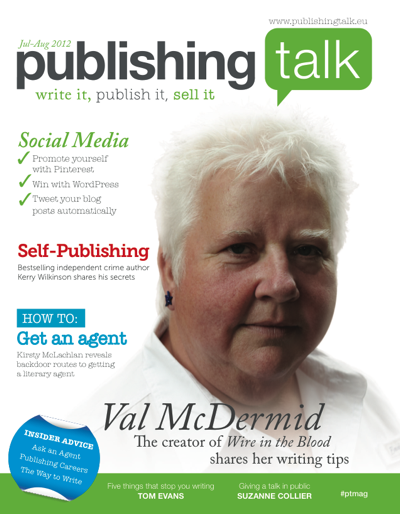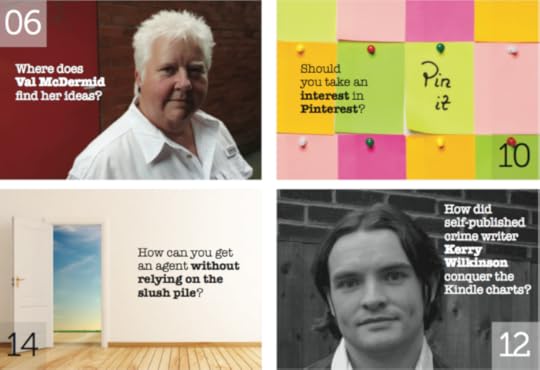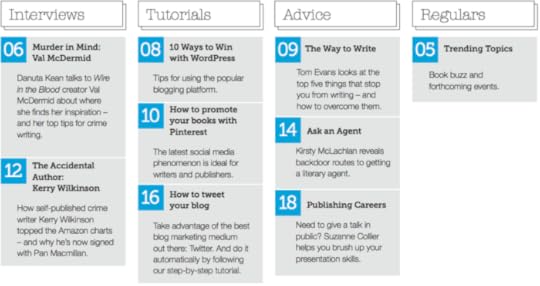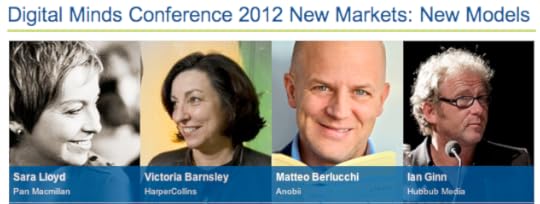Jon Reed's Blog, page 18
July 20, 2012
Why weddings can be murder for Val McDermid [INTERVIEW]
Val McDermid and Danuta Kean are currently appearing at the Theakstons Old Peculier Crime Writing Festival in Harrogate (19-22 July 2012).
Where does Wire in the Blood creator Val McDermid get her ideas? Danuta Kean investigates.
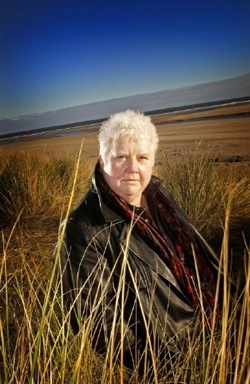 Weddings can be murder for Val McDermid. As can radio shows, conversations, walks on beaches and even book reviews. For these are among the unlikely inspirations for the crime writer’s 25 bestsellers, including recent UK number one The Retribution (Sphere, 2012).
Weddings can be murder for Val McDermid. As can radio shows, conversations, walks on beaches and even book reviews. For these are among the unlikely inspirations for the crime writer’s 25 bestsellers, including recent UK number one The Retribution (Sphere, 2012).
‘When I started off I thought I had maybe three or four novels in me,’ she explains over a cup of tea on the lawn of St Hilda’s College, Oxford, her old college and where she is hosting a crime writing conference ‘The concept that I would still be full of ideas after 25 books seems bizarre, but there has never been a point in the last 25 years when I have thought, “What am I going to write?”’
For those of us who struggle to realize one idea McDermid’s admission that she ‘always has at least three ideas at an advanced stage’ in her imagination will be a source of wonder as well as envy. ‘Things come from small beginnings,’ she explains. ‘It can be a throwaway line on the radio or a little anecdote someone shares over dinner.’
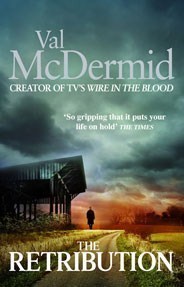 Unlike other writers the Queen of British Noir does not scribble these crumbs of inspiration into a notebook. ‘I work on the principle that if it’s not interesting enough to remember, it’s not interesting enough for a reader to want to read about it.’ Her voice retains the tough, no nonsense tones of her working class roots in Fife, Scotland. It is one of those accents that can make a whisper sound sinister and clashes with our surroundings – a rose garden in an elite English university.
Unlike other writers the Queen of British Noir does not scribble these crumbs of inspiration into a notebook. ‘I work on the principle that if it’s not interesting enough to remember, it’s not interesting enough for a reader to want to read about it.’ Her voice retains the tough, no nonsense tones of her working class roots in Fife, Scotland. It is one of those accents that can make a whisper sound sinister and clashes with our surroundings – a rose garden in an elite English university.
It was from here that she spied the inspiration for Trick of The Dark (Sphere), her 2010 standalone thriller. ‘I was sitting on the lawn just by the river, over there,’ she points towards the banks of the Cherwell, where a girl in a punt trails her hand in the water, while her male companion lazily pushes it along.
…
Read the full article and Val McDermid’s writing tips in Publishing Talk Magazine issue #01.
[Image © Alan Peebles]


July 18, 2012
Publishing Talk Magazine 01, Jul-Aug 2012 – Crime Writing
Issue #01, Jul-Aug 2012 – Crime Writing
Welcome to the very first edition of Publishing Talk Magazine. Our theme for issue #01 is crime writing - available now as:
Print magazine ($5.00) from MagCloud (includes free digital edition)
Digital magazine ($2.00) from MagCloud (PDF + iPad)
Kindle (text only) from Amazon.com ($0.99) or Amazon.co.uk (£0.77).
With two major crime writing events upon us on both sides of the Atlantic – the Theakstons Old Peculier Crime Writing Festival in the UK and the Book Passage Mystery Writers Conference in the US – we’ve turned to crime for our first issue, and interrogated two bestselling crime authors. Danuta Kean speaks to queen of crime Val McDermid about how she finds inspiration for her writing. And self-published author Kerry Wilkinson tells us how he topped the Kindle charts – and why he’s now signed with a traditional publisher.
Tom Evans also offers advice on overcoming the top five things that stop us from writing. Kirsty McLachlan lifts the lid on some backdoor routes to getting an agent. And if you want to promote your books, there’s advice on using the social network everyone’s talking about at the moment: Pinterest; tips for using WordPress; and a step-by-step tutorial on promoting your blog with Twitter. Whether publisher or author, most of us have to do some public speaking as part of our job. Publishing careers consultant Suzanne Collier has some practical advice for giving a talk in public.
Download sample pages from the current issue and get exclusive free previews of each issue before it publishes when you sign up to our mailing list.
What we’re talking about in this issue
Issue #01 includes:
Letter from the editor
Trending Topics – Book Buzz and Forthcoming Events
Murder in Mind – Danuta Kean asks Val McDermid where she finds her ideas
10 Ways to Win with WordPress
The Way to Write – Five Things That Stop You Writing by Tom Evans
How to Promote Your Books With Pinterest
The Accidental Author – Jon Reed ask Kerry Wilkinson how he topped the Kindle Charts
Ask an Agent – Backdoor Routes to Getting a Literary Agent by Kirsty McLachlan
How to Tweet Your Blog – a step-by-step tutorial on using Twitterfeed
Publishing Careers – Giving a Talk in Public by Suzanne Collier
Available now from MagCloud as a full-colour print and digital magazine, and from Amazon.com orAmazon.co.uk as a text-only Kindle edition.


July 12, 2012
What is the future of publishing?
That perennial question: What is the future of publishing? Nick Morgan at forbes.com [12 Jul 12] says:
There has been a great deal of handwringing in the book publishing world for the last decade or so over what the Internet is going to do to traditional publishing. And in the last few years, experimentation has increased, with successful authors like Seth Godin by-passing traditional publishing, new ventures like NetMinds from Tim Sanders and team, and the explosion of various kinds of self-publishing. Amazon has become, of course, a huge presence in the book with, now paying advances just like traditional publishing, as well as trying out print-on-demand books and of course the Kindle.
I get questions all the time from prospective authors who wonder whether it’s worth it to publish in the traditional way at all. The quick answer is, for speakers it’s still important, for now. For everyone else, it depends. But everyone wants to know, where’s the book business headed? Who’s going to survive, and what will the terrain look like when the battle is over?
Here are Nick’s five predictions:
Amazon’s power keeps growing
Traditional publishers have one chance left: form a relationship with readers
An interesting exception to this pattern is Harvard Business Publishing
Hybrid self-publishing companies are the other winners
The rest of written word goes online and gets shorter.
Read the post and the predictions in full at forbes.com.


May 14, 2012
The Publishing Talk Guide to Blogging
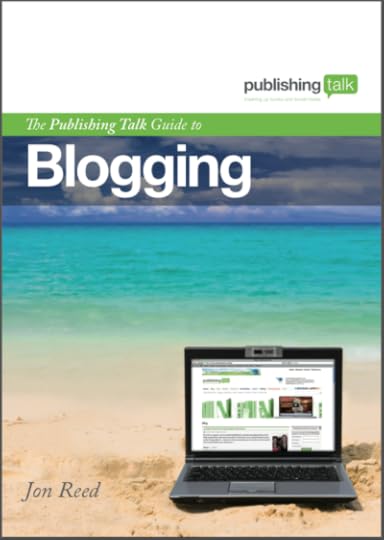 The next Publishing Talk Guide is coming soon! And this one is all about the most essential starting point for your social media marketing: blogging.
The next Publishing Talk Guide is coming soon! And this one is all about the most essential starting point for your social media marketing: blogging.
The ebook will explain how to use blogging to:
build an online platform for yourself
use blogging to promote your books
use blogging to get a book deal.
You will learn how to:
get started with WordPress
use plugins and widgets
find topics to write about
automatically tweet your blog
promote your blog
go on a blog tour
and much more!
The Publishing Talk Guide to Blogging is a comprehensive guide to promoting your writing and your books online.
About the author: Jon Reed is the Founder and Editor in Chief of Publishing Talk, which has the largest publishing community on Twitter with over 200,000 followers. He previously worked in publishing for 10 years, including as publishing director for McGraw-Hill. His book Get Up to Speed with Online Marketing was published by FT Prentice Hall in 2010. Jon regularly lectures and runs workshops in social media marketing. In November 2012 he is running a week-long course with Sarah Salway and Danuta Kean for the Arvon foundation called Building your Online Platform.
Publication date: July/August 2012
Hashtag: #ptgblogging
Sign up to the mailing list to be the first to hear when the ebook publishes, for a discount on the PDF edition and for a free Blogging Cheat Sheet.


How an online shoe retailer tripled its sales with YouTube

April 15, 2012
London Book Fair Digital Minds Conference 2012 – Live Blog
Welcome to the London Book Fair Digital Minds Conference live blog! I’ll be updating every 5 minutes or so, so keep refreshing the page to see the latest action from the conference. Join the discussion by commenting below, or by adding #digiconf12 to your tweets. Are you ready? Let’s get digital!

All aboard the QE2! The conference centre rather than the cruise ship, sadly.
Keynote: The Future of Creative Media – Jim Griffin
10:05 – Conference Chair Evan Schnitmann (Bloomsbury) introduces Jim Griffin’s (OneHouse LLC) keynote
We’re living in a time of Tarzan economics – how do we let go of the old vine and grab the new vine to go forward? JIM GRIFFIN
10:10 – Jim Griffin (OneHouse LLC): We’re living in a time of Tarzan economics. How do we let go of the old vine and grab the new vine to go forward? There is a battle over piracy, but this is not our biggest battle. We’re in a battle for limited time and money of our audiences.You can never understand the media of your time. Like a fish understanding water. It’s fashionable to think we live in special times. I don’t believe it. The transition from mechanical to electric was far more savage that the transition from electric to digital.
Need to look backward rather than forward. Guttenberg got started pirating Papal indulgences. The library in Alexandria was piracy – stocked with books seized from the harbour. Jazz was an unpopular medium that found its way into popular culture via technology.
10:20 – We need to make it faster, easier and simpler for people to pay for content in the hope that people will when they can. You have only to look at Amazon. We need a feminization of marketing – starting relationships that never end. Amazon is a woman. It remembers what you last bought, the colour of your eyes, it stays in touch. We need to sort this out if we want a sustainable economy of ideas.
10:25 – We need to seek balance that equalizes access to culture, knowledge, information. And we need to do it fast as increasingly the Internet is God. People spend more time on the Internet than at church. People confess their deepest secrets to a search engine rather than to a priest.
The .com economies will soon become bigger than the G8. We will do a lot better with an open hand than a closed fist. We can hold more in an open hand than a closed fist.
Keynote: Content is King – Andrew Steele
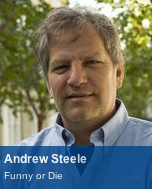 10:30 - Next speaker: Andrew Steele, former head writer at Saturday Night Live and runs www.funnyordie.com, the website started by Will Ferrell.
10:30 - Next speaker: Andrew Steele, former head writer at Saturday Night Live and runs www.funnyordie.com, the website started by Will Ferrell.
Andrew Steele starts by showing a funnyordie video.
10:35 – Lot of disruption in publishing and also in the entertainment industry. Background in TV – was a comedy writer for 20 years. funnyordie is a website built on user engagement. The parallel in publishing would be a website built on self-publishing.
We got out there and found that users aren’t funny. There are a million very unfunny videos on YouTube (which fortunately you don’t have toi look at as people pass around the best ones). We hired staff – writers, producers, directors – and made our own videos. Started making stuff for funnyordie – traffic increased on our site. Users could not bring in the experience people were looking for.
Once you increase traffic, you increase ad revenue and this is a good thing. The thing that was frightening was discovering that the Internet was crap and couldn’t solve our problems in the entertainment industry. But used background to create really good stuff.
The Internet is frightening to Hollywood right now. I’m sure self-publishing is frightening to publishers at the moment. But the most creative, best people on the Internet are winning for a reason. There isn’t enough good stuff out there. ANDREW STEELE
10:40 – We discovered that the best people are generally the professionals. Publishing has access to the real artists and make use of them. The Amazons of the world will never know what the people in this room know because they never know who those people are. Engagement is the key. The best people inside this technology are the ones who’ve run it for years.
In Hollywood everything is basically the same as it was 20-50 years ago. The artist drives all the traffic – there’s no medium that can displace that. Comes down to the smartest people controlling these things rather than disruptive technology taking this away from us.
In publishing it’s always the creative people who matter and there will always be a way to monetize that.
Schnittman: Curation is not enough – content is king. Now over to the King of Content…
Keynote: Pottermore – Charlie Redmayne
10:45 – Charlie Redmayne (Pottermore) takes to the stage.
Redmayne: Harry Potter – 50m book sales worldwide and most successful movie franchise in history. Pottermore was something Jo [J.K. Rowling] really wanted to do to engage with digital and give something back to the fans.Two parts:
Pottermore Experience- unique exploration of the stories containing new writing from J.K. Rowling
Pottermore Shop – the only place to buy the ebooks and digital audiobooks
10:50 – allowed 1m people to enter the site when it opened in beta summer 2011. 97% have looked at every piece of content and the average user session is 47 minutes. The platform couldn’t support the amount of interaction. It opened formally at 8.15 am UK time yesterday (when teenagers and Americans were asleep!) Quietly announced it with a tweet:
#bbpBox_191069344455868417 a { text-decoration:none; color:#0084B4; } #bbpBox_191069344455868417 a:hover { text-decoration:underline; } We're opening to everyone http://t.co/FnRDYZYg #Pottermore
 April 14, 2012 7:44 am via web Reply Retweet Favorite Pottermore
April 14, 2012 7:44 am via web Reply Retweet Favorite Pottermore Redmayne shows a promo video from the Pottermore site.
10:55 – Contains hidden content and other goodies from J.K. Rowling.Reactiuon to the site has been striking / borderline disturbing. [CR shows video reactions made by fans]
11:00 – Readers assume that digital books should be cheaper than print books, so we price in that way. We can do some fantastic enhanced ebooks later this year. We want this to become the central hub for all things Harry Potter – the store will grow further – only just started.
Pottermore is a huge challenge to publishers, who are struggling to retain their relevance in new world. CHARLIE REDMAYNE
11:05 - need to expand digital platforms to gaming, YouTube, Facebook, apps, in-flight entertainment etc. Pottermore is a huge challenge to publishers, who are struggling to retain their relevance in new world. Need to learn to build brands with our marketing in publishing. Social media isn’t a branding strategy. Need publishers to have brand development strategies – invest in brands over a period of years.
11:15 – 11:20 - coffee break time! See you in a bit.
Panel: Blurred Boundaries: Publishers, Agents, Retailers, Distributors and Authors
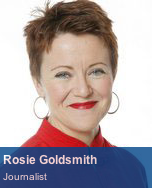 Chair: Rosie Goldsmith (journalist). Panellists: Victoria Barnsley (HarperCollins), Ed Victor (agent), Kerry Wilkinson (bestselling self-published author), Michael Tamblyn (Kobo)
Chair: Rosie Goldsmith (journalist). Panellists: Victoria Barnsley (HarperCollins), Ed Victor (agent), Kerry Wilkinson (bestselling self-published author), Michael Tamblyn (Kobo)
11:20 – Goldsmith: Publishing faces the biggest change since the invention of the printing press and at the heart of this is digital.
11:25 – Wilkinson: Self-publishing is just that – you can’t just be a good writer, you have to be good at publishing too. I discovered that many Kindle books weren’t engaging in the free sample – just loads of dedications and endorsements, and a prologue that only makes sense if you’ve read the book. You need to grab people straight away and end on a cliffhanger that makes them want to read more.
11:30 – Barnsley: Self-publishing is a nursery of talent – you can test the market first and the publisher can take less risk, so in some respects we welcome self-publishing. It is a bit of a threat too, as it’s bringing in competition. Many self-publishers have decided to go the traditional path after self-publishing, but if too many decided to do their own thing that would be a lot of competition for us.
Victor: I wasn’t trying to spit in the eye of the publishing industry – I just wanted to bring stuff back into print.
11.35 – Tamblyn: we sit on both sides of that fence.
If you are a publisher you are a content-led, product-led business at heart. Amazon is a brilliant company but it is consumer-led through and through. VICTORIA BARNSLEY
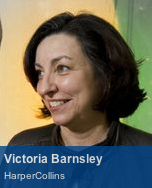 Barnsley: We all finding that we’re going into new business models – ecommerce, retail, speaker agency etc; but if you are a publisher you are a content-led, product-led business at heart. Amazon is a brilliant company but it is consumer-led through and through. The author and the content defines the culture of our business. It’s great that the silos are breaking down but I have a suspicion that it’s not possible to be a one-man band and all things to all people. Can we be author-led and consumer-led at the same time?
Barnsley: We all finding that we’re going into new business models – ecommerce, retail, speaker agency etc; but if you are a publisher you are a content-led, product-led business at heart. Amazon is a brilliant company but it is consumer-led through and through. The author and the content defines the culture of our business. It’s great that the silos are breaking down but I have a suspicion that it’s not possible to be a one-man band and all things to all people. Can we be author-led and consumer-led at the same time?
11:40 – Wilkinson: I don’t understand why, if publishers have 18 books in a series, they don’t sell the first one for a quid and then people will come back for subsequent ones in the series, like self-published ebooks.
Goldsmith: Why are ebooks so expensive then?
Tamblyn: That’s due to publishers; we do have books at £1 – £2, but they tend to be self-published.
Wilkinson: It’s about value rather than price. People buy the next book because they want to know what happens next, not because of price. My first book sold the most but made the least money.
Tamblyn: We can create a community of interest around us / authors / products. On any given day in our top-10 we have self-published authors. What’s the entry price for a ‘high risk’ author who you’ve never heard of before?
11:50 – Barnsley: Discoverability online is the big challenge. Unlike a physical environment where you can browse, it’s very difficult with digital. Price is one thing you can use as a lever.
Tamblyn: We can look at the social media activity that surrounds a book as a way to elevate it. The very best support is your friend saying ‘you have to read this book’. We have word of mouth on a scale as never before now. But how do we take some of those things that we lost in the move to digital and bring them, back in a new way?
Goldsmith: Ed Victor, you are the showbiz equivalent of a literary agent. How do you keep that personality going in a digital world?
Victor: The rise of agents is something that I have been part of and watched. What we agents have is equivalent to barrels of crude oil: content which can be marketed in many different ways. Our job is to figure out the best way forward.
Barnsley: It’s a hybrid world. Print is still our biggest business, so we need the old skills but new skills too. E.g. we’ve recently hired a pricing expert. I’m not a digital native – barely a digital immigrant – but it’s a very exciting time – there are incredible opportunities. One can reach consumers one could never have reached before.
Victor: We have a simple business model copied from Jane Friedman: you deduct the production costs and split the revenue 50/50. And because we have brought books back into print, we’re also selling foreign rights.
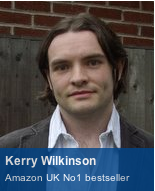 Wilkinson: I was approached by an awful lot of agents – not always a pleasant experience. I’m still working full-time as a sports journalist, thought I had nothing to lose with a traditional publisher [Pan Macmillan]. It’s partly about exposure; but if it doesn’t work, I still have a #1 bestselling book, I’ve still paid off the mortgage – I have nothing to lose. I was looking at an author’s website the other day and the only way to contact him was via his agent – what sort of message is that to send out to readers? I’ve got a huge mailing list of people who have emailed me.
Wilkinson: I was approached by an awful lot of agents – not always a pleasant experience. I’m still working full-time as a sports journalist, thought I had nothing to lose with a traditional publisher [Pan Macmillan]. It’s partly about exposure; but if it doesn’t work, I still have a #1 bestselling book, I’ve still paid off the mortgage – I have nothing to lose. I was looking at an author’s website the other day and the only way to contact him was via his agent – what sort of message is that to send out to readers? I’ve got a huge mailing list of people who have emailed me.
Barnsley: It’s important for authors to start a relationship with readers – we are intermediaries, and that’s something different to what publishers have traditionally done.
12:00 – Goldsmith: The book industry is very slow to change.
Tamblyn: Do you think so? This week alone we’re looking at publishers having to come up with a new business model in 48 hours or less. What could be more fast-moving than that?
Goldsmith: Who, in this blurred world, controls intellectual property?
I thought that, by the time we reached this phase in publishing, I’d be dead. But go with it, embrace it, we’re trying to figure it out and make money as we do. ED VICTOR
 Victor: You were right [about publishing being slow to change] until recently. I feel much more camaraderie with people in the publishing industry now because of these blurred boundaries – we’re all on a stormy sea trying to navigate the waters together. I thought that, by the time we reached this phase in publishing [ebooks], I’d be dead. But go with it, embrace it, we’re trying to figure it out and make money as we do.
Victor: You were right [about publishing being slow to change] until recently. I feel much more camaraderie with people in the publishing industry now because of these blurred boundaries – we’re all on a stormy sea trying to navigate the waters together. I thought that, by the time we reached this phase in publishing [ebooks], I’d be dead. But go with it, embrace it, we’re trying to figure it out and make money as we do.
12:05 – Goldsmith: Final predictions, thoughts, or pieces of advice?
Victor: I’d quote Adventures in the Screen Trade: Nobody knows anything.
Tamblyn: How much is this a revolutionary force around the world? E.g. places where previously books could never be bought/moved. We’re changing the way reading happens everywhere – and we’ve not even begun to realize the impact of that.
Barnsley: Given what’s happened this week: Don’t speak to another publisher! Two major issues: value and time. Biggest challenge is finding enough consumer time. We’re not just competing against other books now, but against people’s Facebook time.
Wilkinson: Don’t be afraid of technology. If you embrace it there are so many more opportunities than if you try to compete with it.
Coffee break! See you at 12:25!
Case Study: Social Marketing – The Power of Communities – Matteo Berlucchi
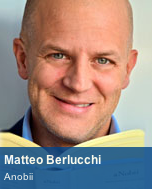 Matteo Berlucchi, Anobii: Key theme is discovery – finding books online. Anobii strapline is ‘together we find better books’ – best way to discover books is through recommendation.
Matteo Berlucchi, Anobii: Key theme is discovery – finding books online. Anobii strapline is ‘together we find better books’ – best way to discover books is through recommendation.
Anobii is 18mths old – backed by HMV, Penguin, HarperCollins and Random House. Acquired an existing company called Anobii, the first social network for book lovers – set up in HK in 2006 – and acquired their dataset. Team of 25 people in London and a new version of the platform created – now in beta (beta.anobii.com)
High street bookstores are closing. Majority of people who go into bookstores go there to browse. Risk polarizing book sales to the frontlist and end up reading what everyone else is reading. Great example is the Richard & Judy Bookclub – guidance on what to read outside of the bestseller lists.
Word of mouth is important, but there’s always an intermediary: your favourite reviewer in a magazine, a bookseller – but the order or recommendation is important, with friend recommendations at the top.
12:35 – Other readers are the key that unlocks discovery – social networks are important. They provide the idea foundation to develop a ‘recommendation marketplace’.
We are a tech company – we don’t have any publishers on the team.
We create a way for people to organize books around their interests. Books can live in multiple topics and be more or less relevant to that topic. Not very different to what a good bookseller does in a store. Three-dimensional browsing space where people can jump from topic to person to book.
In order to sell ebooks you need the ecosystem to enable you to sell them. Not possible to share ebooks between devices, didn’t want to use Amazon, so we had to build our own reading apps.
12:40 – How do we get around the “I am on Facebook and don’t need yet another social network” objection? By making our API available to create third-part apps from, such as Anobii Facebook App. Organize games via Facebook app such as ‘Top Reader Challenge’. Payback is that we get lots of data on what people are reading. Leverage the best of the existing social networks. We’re using Pinterest, Twitter and iTunes.
This industry needs to move to a DRM-free paradigm as fast as possible. MATTEO BERLUCCHI
Final comment: we are DRM-free! This industry needs to move to a DRM-free paradigm as fast as possible. The elephant in the room is that Amazon sells 90% of the ebooks in this industry. In order to have a healthy ecosystem, we need to make ebooks as widely available as possible.
Hard Times for Soft Covers? Facts Behind the Fiction – Mark Oliver
 12:50 – Mark Oliver, Oliver & Ohlbaum Associates: In 2011 10% of people bought ebooks. We predict that by 2017 25% will be regularly buying ebooks. This is driven by device ownership.
12:50 – Mark Oliver, Oliver & Ohlbaum Associates: In 2011 10% of people bought ebooks. We predict that by 2017 25% will be regularly buying ebooks. This is driven by device ownership.
Online book buying: 31% of sales in the UK in 2011. In 2017, the volume of books sold will increase by 8.5% but consumer spend will fall by 10%.
This is not as bad as the music industry, which saw a decline of 35% between 2003-2011; or the DVD market, which saw a decline of 16% between 2005-2010 DVDs. Supermarkets and online retailers have sharply eroded traditional margins. This will continue and ebooks will accentuate this trend.
13:00 – Reef Read: So far, the book trade has fared well in the UK, and the Internet has helped. But we’re facing regulatory intervention on the agency model in the US – and possibly the EU.
We’re looking at the rise of new competitors with the vertical integration of online retailers, especially Amazon.Another threat to publishers is the rise of self-publishing and P2P publishing, which could threaten to put out publishers completely.
The traditional value chain was linear. The new value chain is radically different: e.g. Amazon getting into publishing and authors self-publishing. Authors such as J.K. Rowling launching online platforms such as Pottermore.
Not clear how these structural shifts will impact on publishing, but it is clear that publishers will have to change what they do in order to adapt and thrive.
Average price for a fiction book in the UK: £8.56 – hardback; £4.82 – paperback; £3.16 – ebook. In the old world, readers had a simple choice. Could buy new or 2nd handbooks from a store, borrow books from friends or the library, or join book clubs.
The Web 1.0 word of ‘online physical’ saw prices for fiction of between £3.99 – £7.99. The Web 2.0 ‘online ebook’ world has seen fiction prices drop to £0.69 – £6.99. Bricks and mortar stores sell fiction for between £2.99-£9.99 bricks. Lending is free, and new models such as Kindle daily deals and eSingles are emerging.
Old genres were: fiction, non-fiction, children’s, School/ELT. New world: increased fragmentation / competition across all genres.
13.10 - Mark Oliver: Device uptake will be fast and far-reaching. Ebooks will be the leading format. The Internet will dominate book sales. Volumes will go up but market values will go down as prices are eroded. Publishers have so far been immune to these trends, but now need to adapt.
Time for lunch!
Panel: Children’s Content – Leading the Way?
Chair: Sara Lloyd (Macmillan). Panellists: Kate Wilson (Nosy Crow), Belinda Rasmussen (Macmillan Children’s), Eric Huang (Penguin Children’s), Jeff Gomez (Starlight Runner Entertainment).
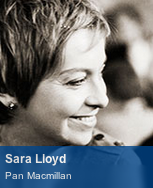 14:10 – Sarah Lloyd: When will the moment come for children’s publishing to go digital in a meaningful way? What will the catalyst be? How can today’s publishers position themselves for what’s coming?
14:10 – Sarah Lloyd: When will the moment come for children’s publishing to go digital in a meaningful way? What will the catalyst be? How can today’s publishers position themselves for what’s coming?
Lloyd: Teen publishing is taking off – how about younger children’s?
Huang: Companies like Nickelodeon are already in that space – a lot of the titles we’re publishing became digital quite quickly because they were already part of the larger children’s publishing landscape and having big brands such as Peppa Pig helped.
Wilson: I came out of a corporate publishing background and felt that some of the things I’d wanted to do were difficult to do in a corporate context. You had to feed a machine, especially in tough economic times. I set up Nosy Crow to do digital books from the start. Wanted to look at what could make the reading experience more engaging for a child. The proliferation of devices over the last year has helped our sales. The pick up of sales following Christmas is really just backlist sales – but driven by devices.
Gomez: In the US 30-40% of parents have stuck mobile phones/tablets into the hands of their kids. Esp with tablets, you are removing the last barrier of friction. Manipulating a book, turning pages etc difficult for an infant – there is a direct connection between the child and the app / digital book. It is manipulatable with tremendous ease, which delights the child and the parent. We will see a cascade effect.
Wilson: for pre-schoolers who cannot read text, the addition of audio/video is a fantastically empowering thing for the child. No longer have to ask parents to read it to them.
Huang: It has been so quick for children’s publishing, and they are leading the way because of our customers. For adult publishing it’s a nice thing to have – but our customers demand it.
Rasmussen: But it would be a shame if that emotional connection of the experience of reading with a parent was lost.
Huang: If you want an interactive book, you can’t just slap some pops onto it for the sake of it – has to be relevant to the story. It’s a question of technology and awareness of what each device can do.
Gomez: Best not to have an author or illustrator guess at what will work, but bring in a designer who understands the technology and sensibilities that go into a product like this. It requires a third-party professional.
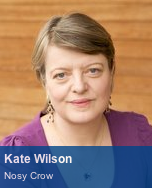 Wilson: We create all our apps in-house. I think what Jeff says is true – being a children’s publisher is not enough. It helps though, because we are already working in a multimedia way, with text and images, and imagining a book being read aloud. App development is a much more collaborative process: writing, illustration, coding, voice etc. A lot of the time we get proposals from someone saying ‘I have written an app.’ Really? It is usually two sides of A4 starting ‘It was a dark night [the stars twinkle when you touch them]‘. This is not enough. We need people who think about storytelling in a non-linear way.
Wilson: We create all our apps in-house. I think what Jeff says is true – being a children’s publisher is not enough. It helps though, because we are already working in a multimedia way, with text and images, and imagining a book being read aloud. App development is a much more collaborative process: writing, illustration, coding, voice etc. A lot of the time we get proposals from someone saying ‘I have written an app.’ Really? It is usually two sides of A4 starting ‘It was a dark night [the stars twinkle when you touch them]‘. This is not enough. We need people who think about storytelling in a non-linear way.
Huang: We’re using a lot of traditional children’s book illustrators, because the aesthetic often works best. But we need to pair them up with an animator. The word ‘Digital’ can be intimidating for people, but can also lead to projects that are too ambitious.
Wilson: We’ve always said that we’re digital, so the authors and illustrators who approach us do so because we are establishing a name for ourselves in this space. A lot of the thinking that was applicable to novelty books is applicable to this, as Jeff says, but sometimes something works better as a novelty book. We shouldn’t confuse media – some things work best in one medium, some things work best in another.
Gomez: Too many people think a digital format means ‘Choose Your Own Adventure’, a set of branching pathways through the text. The participation has to be more truly interactive than this, and have more to do with bells and whistles.
Wilson: The ways you use the features of the device in a way appropriate to the story is important. We did Cinderella, and had to think hard about the key story elements of magic. Three Little Pigs was about drama and action and movement – so we had to do something different. You can’t just use the same godollop of code. You have to be responsive to the nature of what that story is.
Lloyd: What about parental concerns about the amount of screen time their children spend?
Wilson: The important thing is to balance the parental sense that reading is good for you and the child’s expectation that the experience will be interactive. Apps are walled gardens, and this is reassuring to parents.
Gomez: Children’s books make money. A good amount of money. The expectation of publishers is that, in a digital world, children’s books won’t make as much money, and this is stepping on the brakes somewhat. Two important points:
The idea that digital content should be much cheaper than physical content will evolve away. Because there is an emerging generation who perceive it as valuable. I know it’s hard to belive right now!
There are new kinds of partnerships that you are gong to have to form with your authors. We’re starting to see those partnerships with teen fiction and YA.
Rasmussen: If the process seems slow it’s because, on the children’s side there hasn’t really been a market until recently.
Lloyd: What do we need to bear in mind about the way in which young people consume content? Is it true that teenagers have no attention span?
Wilson: For our age group of 2-7 year olds, it’s a bit different, and familiarity is key. Children can interact with apps in creative ways -
Gomez: Teens and increasingly tweens are switching up between gadgets, devices and screens at a more and more rapid clip. One of the solutions to this is not necessarily reiterating the same content on these platforms, but offering different types of content that play to the strengths of different platforms, but are set in the same story universe. So you’re doing some branding/franchising too, but keeping the teen in the story world that they love. As children get into their teens, they’re getting more into interactive content such as video games. They’re solving problems in complex, non-linear ways – not like the arcade games of the 1980s!
Wilson: Andrew Steele said this morning the UGC wasn’t always very good, and it is tempting to imagine that we are all content professionals. That balance of linear and non-linear narrative is interesting – children don’t always want to make their own narrative – they want stories better than they can imagine. This is why J.K. Rowling is popular. We are all descended from people who told stories around fires in caves about the mammoth that got away – we are storytellers. Our conversations are stories. Yes, we can fragment and cut it up – but I don’t think the non-linear story that satisfies us goes away.
Gomez: I didn’t mean we’re raising a generation of kids who understand Pulp Fiction. I meant creating a story world – as you move through the story there are different things that are unfolding in other platforms. They’re all linear, but complementary and add up to a greater experience.
Gomez [response to audience question]: My company, Starlight Runner Entertainment, is creating multi-platform storytelling. We initially wanted to go with a publisher. They were going to invest a lot of money, but they couldn’t get their head around the editorial concept of part of the story unfolding on Facebook. So we went to Sony.
Panel: Emerging E-Book Markets: Germany, Spain, France
Chair: Evan Schnittman. Panellists: Fabrice Piault (Livres Hebdo), Siobhan O’Leary, Antonio Fraguas Garrido (El Pais)
 15:05 – Fabrice Piault: If you want to know what’s going on in the French ebook market, you need a microscope. Only 1.5m tablets and 145K ereaders were sold last year. Kindle and Kobo dominate (Kobo distruted by Fnac). In 2010 the ereaders were not good quality.
15:05 – Fabrice Piault: If you want to know what’s going on in the French ebook market, you need a microscope. Only 1.5m tablets and 145K ereaders were sold last year. Kindle and Kobo dominate (Kobo distruted by Fnac). In 2010 the ereaders were not good quality.
The ebook market was worth about 18m Euro in 2010 (0.6% of the industry). No more than 90K ebooks in various formats – many PDFs included. Max 8% of printed books are available as ebooks.
There is an emerging digital market for comics and graphic novels, and dozens of apps from artbook publishers and children’s publishers.
All the main publishers have built ebook distribution platforms like Numilog (Hachette), ePlatforme (Editis), Eden (Gallimard/Flammarion/La Martiniere)
15:15 – Will the number of digitized books increase rapidly? Will the publishers lower their prices? How soon will the public be seduced by ebooks? Online print book sales represent only 10% of all book sales in France – very different to the English-speaking world.
15: 20 – Siobhan O’Leary: The German market is facing a lot of the same issues as the French market. Germany has a very established publishing industry, and the second largest book market in the world (9.73bn Euros). Fixed book prices: also, 7% VAT on print and 19% on digital.
13% are translations into German, 2/3 of which come from the English-speaking world. Four largest groups: Verlagsgruppe Random House, Hotzbrinck, the German arm of Sweden’s Bonnier Group and Weltbild. Biggest STM/academic publishing group is Springer.
Market share of ebooks: 1% (up from 0.5% in 2010). Expected to be 16.2% by 2015. There is a clear trend towards fiction: 85% of ebooks sold are in this genre. The industry as a whole is starting to take ebooks more seriously, including publishing bestseller lists. Current bestselling authors include Henning Mankel and Steig Larsson.
Ebooks are generally sold at a retail price about 20% lower than the lowest-priced print edition. Same price if under 10 Eur. So you’re sometimes paying much more for an ebook as the VAT is higher.
15:30 – Ebook readers first hit the German market at the end of 2009. But most Germans read on tablets rather than ereaders.
Ebook hurdles: 78% of Germans claim not to want to read from a screen. 85% say they love printed books too much.
O’Leary ends with a quote:
The best way to predict the future is to create it WILLY BRANDT
15:35 – Antonio Fraguas Garrido: 75% of Spanish publishers are already following some kind of ‘digital strategy’. But 40% of people don’t read books. 6% read on screen. Have more ereaders than France – 285K sold in 2011 – 5 x more than previous year. Over 1m devices in Spain and rising.
LIBRANDA is an ebook distribution platform founded by big three publishers in Spain: Grupo Planeta, Random House Mondadori, Santillana.
Main concerns:
Pricing - price of ebooks is too close to printed books. VAT is 4% on print books, 18% on ebooks.
Piracy - In 2011, 49% of ebook content available online in Spain lacked proper copyright holders. 793m Eur value – the highest for any cultural content.
In Spain, the ebook industry requires a lot of investment but the revenues are too low. Ends with a quote: “In the future customers will pay for services related to content rather than paying for the content itself.”
Digital Innovation: Inspirational Startups
Introduced by Paul Brindley (The Appside). Now for some 6-minute presentations from innovative startups. First up:
Booktrack
Booktrack synchronizes soundtracks to books. Example: reading the text opening to Star Wars with soundtrack over it is ‘booktracking’.
NYU study: “The study clearly show the distinct cognitive advantages of sound-enhanced electronic reading platforms.”
Flooved
Hamish Brocklebank, Co-Founder Flooved: Flooved is a web-based platform that provides students with a package of content on any platform for a monthly subscription. Launched 12 months ago.
Supply content from academic publishers, and can feedback on which chapter(s) students read and engage with the most. A cool engaging interactive platform for students; a pathway for publishers that isn’t disruptive.
Mindshapes
Christian Dorffer, Mindshapes: Mindshapes was founded in 2010. We have a background in the gaming industry. We’re focusing on how adults and kids learn through play.
There are around 500m kids with access to the Internet but 50% with no access to books. Various virtual worlds have been created for kids, such as Club Penguin, Moshi Monsters, Poptropica, which are educational to varying degrees. We have defined a new platform that focuses not just on passive brand engagement but interaction with characters.
The result is Magic Town: a child-centred virtual world for 2-6 year kids. A new interactive storytelling format, a revolutionary business model (subscription, pay per view and downloads), collaboration with parents and teachers. A new channel for publishers – launch brands in months, discoverability, subscription model and unique level of consumer insights.
Padify
Micahel Kowalski, Padify: Padify makes it easier to repackage your content into ebooks, digital magazines or apps for publication on iPads or other mobile devices.
Skoobe
Christian Damske, Skoobe: Skoobe ['ebooks' backwards] is a mobile library. Launched Feb 29, 2012, financed by Random House and Holtzbrinck. Device independent (currently for iOS, soon for Android). Epub as standard, no enriched ebooks with special formats. First 10,000 readers can borrow and read any number of new books each month for Eur 9.99 pcm, then model will be refined. Open to all publishers.
The Future of Content Business Models – Don Katz
 16:50 – Don Katz, CEO, Audible: Audiobooks should never have been a physical medium. They had no artefact value or beauty and little replay value. 105m Americans drive to work alone (only 119m drive to work). That’s hundreds of hours a week. Audible is what millions of people do when they can’t read or look at a screen.
16:50 – Don Katz, CEO, Audible: Audiobooks should never have been a physical medium. They had no artefact value or beauty and little replay value. 105m Americans drive to work alone (only 119m drive to work). That’s hundreds of hours a week. Audible is what millions of people do when they can’t read or look at a screen.
Our main challenge, ironically, is that there is simply not enough audio. Every book worth reading should be available as an audiobook – but 80-90% of frontlist books don’t go to audio. E.g. if a member of Audible runs out of sci-fi, we lose a member. So we became producers, and we’re now one of the biggest producers of audiobooks, with recording studios running back to back.
17:00 – I thought this was a no-risk business: to use unused audio rights that were just sitting in filing cabinets. When you have content rights they should be used. With print, publishers sell rights aggressively, even in Lithuanian[!] But this is not the case with audio.
17:10 – Why pay authors per download? It’s the right thing to do. We pay authors £1 per download. Average writer only earns 6k a year so are always looking for increasing income.
Recently met Neil Gaiman (@neilhimself) who leverages his 1.7m Twitter followers to sell books.
17:15 - Movie industry spent money and effort trying to prevent movies on VCR and cable in the Supreme Court, arguing that even on a small screen it’s still a movie. But by the end of the 20th Century movies on cable was a $33bn industry.
Piracy helped Audible take off because it taught everyone how to download!
Aiding the work of writers who seek to capture the human condition is a good thing to do. Supporting the traditional supply chain is only good insofar as it supports the creative endeavour. Increasingly the old business models just don’t work in the modern age.
Closing Comments – Evan Schnittman
17:20 – Evan Schnittman wraps up. What have we learned?
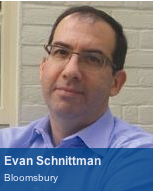
The Internet is God
User Generated Content is crap
There’s more to come from the Harry Potter franchise
Mortgages can be paid even by self-published authors
Price pressures will continue to expand
Ebooks have learned to crawl finally in France, Germany and Spain
Hamish might want to look into Xanax
HTML5 is finally here
Skoobe is ebooks backwards
Does a right exist if no one can hear it?
That’s it, folks – we’re off for ‘networking drinks’ now! Let us know what you think about any of the issues raised in today’s conference in the comments below. And I’ll see some of you at Tuesday’s London Book Fair Tweetup!


March 9, 2012
London Book Fair Tweetup 2012
Is that the sound of champagne corks popping? Did someone say ‘cocktails and canapés’?
For the third year running, Publishing Talk is pleased to be hosting the official London Book Fair Tweetup! Come and mix and mingle with the publishing Twitterati. And if you can’t join us live, follow along with the Twitter hashtag #LBFtweetup.
Your fellow Twittery publishers, authors, agents and other book trade folk will be gathering on on Tuesday 17th April 2012 at:
5.00pm – 6.00pm: The Children’s Innovation Bar inside the Earls Court exhibition centre
6.00pm onwards: Mango Lounge, 306 Earls Court Road, London SW5 9BA (find them on Facebook)
We have the Mango Lounge exclusively until 10pm. For those coming from the Book Fair, this is our closest venue yet – just around the corner from the Earls Court exhibition centre. For those coming from elsewhere, it is also on the same road as Earls Court tube station. Get there early for champagne cocktails and food!
This is a great opportunity to meet fellow book tweeps in real life, and connect with like-minded folk over cocktails. The perfect way to unwind after a hard day’s Book Fairing.
Don’t worry if you’ve never been to a tweetup before – it’s a very friendly crowd: just pitch up and say ‘hello’. We’ll have name badges to help you identify people by their Twitter usernames; and if you’re new to Twitter and trying to work out your hashtags, @mentions and DMs, I will once more be distributing copies of our Twitter Cheat Sheet.
Look forward to seeing you there!


January 30, 2012
Amanda Hocking, the writer who made millions by self-publishing online
By Ed Pilkington on guardian.co.uk:
In internet-savvy circles [Amanda Hocking] has been embraced as a figurehead of the digital publishing revolution that is seen as blowing up the traditional book world – or “legacy publishing” as its detractors call it – and replacing it with the ebook, where direct contact between author and reader, free of the mediation of agent and publishing house, is but a few clicks away. There is certainly something to that argument. The arrival of Hocking onto the Kindle bestseller lists in barely over a year is symptomatic of a profound shift in the book world that has happened contiguously. Her rise has occurred at precisely the moment that self-publishing itself turned from poor second cousin of the printed book into a serious multi-million dollar industry. Two years ago self-publishing was itself denigrated as “vanity publishing” – the last resort of the talentless. Not any more.
Read the full article at guardian.co.uk.


December 5, 2011
7 Principles of Social Media Marketing
Whichever social media tool(s) you use, there are certain unwritten rules for using them. People don't always like it when you break them. Understanding of the culture of social media is important. If you adhere to the following principles, you shouldn't go too far wrong:
Be authentic, open, transparent. If there's one thing you take away from Get Up to Speed with Online Marketing , it is to be authentic at all times. That doesn't mean you can be rude about colleagues or clients on Twitter. It just means you shouldn't pass yourself off as something or someone you're not. If you're using a social media channel for business, then say so. Behave in a professional way, but don't be afraid to use your personal voice. The good thing about being a small business is that you don't need to get your communications approved by a committee or signed off by five people. You can just do it. Be yourself, be authentic, and people will trust you. We live in an age where trust is no longer in big institutions but in 'people like me'.
Don't go for the hard sell. Don't spam a LinkedIn group with your marketing message. Instead, provide useful content that your community will value. Ideally, create your own community online.
Build social currency. The best way to get a feel for social media is simply to use it. What's more, establishing a social media presence gives you 'permission' to use it for marketing. Once you have been on various social sites for a while, you have more credibility: people will take you more seriously and listen to what you have to say.
Don't view it as just another marketing channel. Social media is not a bolt-on extra – it is a fundamentally different approach to marketing. Using it is a commitment – not a tactic or a campaign.
Don't treat it as a one-way broadcast medium. Yes, you can issue press releases using blogging software but that's not really a blog. You can just use Twitter as an automatic feed from your blog – and it is a great blog marketing tool – but that's not the only or the most engaging way to use it. Share other people's content too. Social media becomes much more interesting, and effective, when it facilitates a two-way conversation between you and your community of interest.
Be clear about responsibilities. If you are a micro-business or sole trader, it will probably be you maintaining all of this. But if there are several of you working on the business, it pays to be clear about who is responsible for updating what, and how often.
Be patient. Social media needs a long term approach. A new blog takes a good six months to establish itself and build a following. It takes a while to build up Twitter followers or Facebook fans. You will need to spend time and effort building and maintaining your online presence before it translates into sales. But that online presence, once established, will continue to build and provide you with an essential source of potential clients and customers, highly targeted within your community of interest, who will come looking for you.
This post is an edited extract from Get Up to Speed with Online Marketing (UK | US), Chapter 1: "Online Marketing 101″.

Tweet This!
Share this on Facebook
Share this on LinkedIn
Share this on del.icio.us
Digg this!
Stumble upon something good? Share it on StumbleUpon
Post this to MySpace
Post on Google Buzz

November 30, 2011
7 Ways to Enhance Your Visibility on Google Plus
By Karen May Dy on socialmediamarketinggirl.com:
There's a lot of buzz and excitement about Google Plus. I've played around with it for the past few months, and observed how people use it. People on Google Plus tend to share valuable content more than they promote whatever products or services they have. Isn't that a good thing? My first impression back then was that it's a combination of Facebook and Twitter, but it's a more authentic social network. It brings back the "social" part of social networking.
Read the full story at socialmediamarketinggirl.com.
Tweet This!
Share this on Facebook
Share this on LinkedIn
Share this on del.icio.us
Digg this!
Stumble upon something good? Share it on StumbleUpon
Post this to MySpace
Post on Google Buzz


